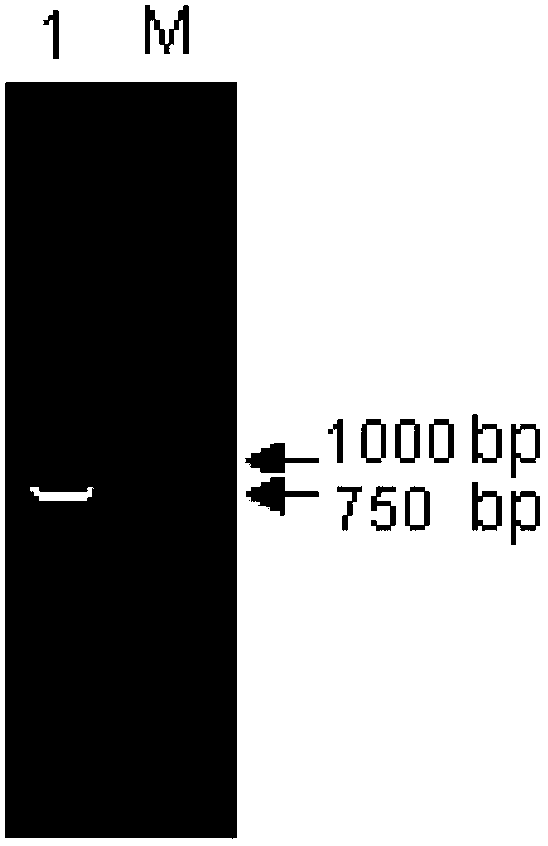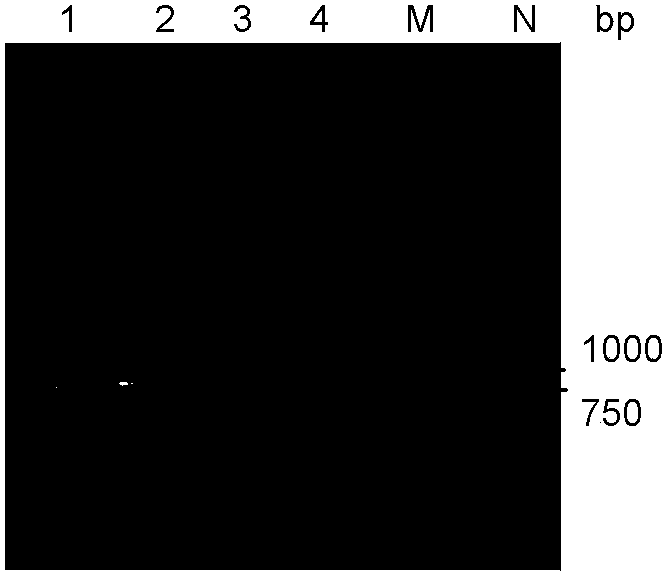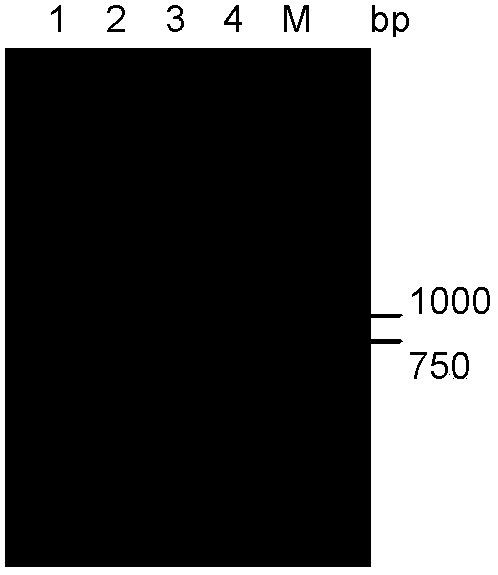Specific primers for detection of infectious hematopoietic necrosis virus
A technique for hematopoietic organ necrosis and specificity, which is applied in the determination/testing of microorganisms, biochemical equipment and methods, etc., can solve problems such as inability to diagnose, and achieve the effects of saving time, good specificity, and sensitivity
- Summary
- Abstract
- Description
- Claims
- Application Information
AI Technical Summary
Problems solved by technology
Method used
Image
Examples
specific Embodiment approach 1
[0021] Specific embodiment one: the high-efficiency PCR detection method of infectious hematopoietic necrosis virus of the present embodiment is carried out according to the following steps:
[0022] 1. According to the gene sequence of IHNV polymerase protein in Genbank database (accession number: L40883), use Primer Premier5.0 to select the gene conservative segment of IHNV polymerase protein to design a pair of specific primers IHNV-Lf and IHNV-Lr;
[0023] 2. Take the disease material to be tested from fish without clinical symptoms of infectious hematopoietic organ necrosis, put it in a small homogenizer, grind on ice for 3-5 minutes, then centrifuge at 3000g for 5 minutes, discard the precipitate, and the supernatant is passed through 0.22 Filter and sterilize with a μM disposable filter to obtain a sterile homogenate supernatant, and then use MEM medium to dilute the sterile homogenate supernatant 1000 times to obtain a tissue filtrate;
[0024] 3. After the EPC cells i...
specific Embodiment approach 2
[0035] Specific embodiment two: the difference between this embodiment and specific embodiment one is that the reaction system of PCR amplification in step four is a reaction system of 25 μL, which consists of the following components:
[0036]
[0037]
[0038] PCR amplification conditions were: 95°C pre-denaturation for 5 min, 95°C denaturation for 1 min, 50°C annealing for 50 s, 72°C extension for 1 min, a total of 30 cycles, 72°C extension for 10 min, and 4°C to end the reaction. Other steps and parameters are the same as those in Embodiment 1.
Embodiment
[0040] The efficient PCR detection method of infectious hematopoietic necrosis virus is carried out according to the following steps:
[0041] 1. According to the gene sequence of IHNV polymerase protein in Genbank database (accession number: L40883), use Primer Premier5.0 to select the gene conservative segment of IHNV polymerase protein to design a pair of specific primers IHNV-Lf and IHNV-Lr;
[0042] 2. Take the disease material to be tested from fish without clinical symptoms of infectious hematopoietic organ necrosis, put it in a small homogenizer, grind on ice for 3-5 minutes, then centrifuge at 3000g for 5 minutes, discard the precipitate, and the supernatant is passed through 0.22 Filter and sterilize with a μM disposable filter to obtain a sterile homogenate supernatant, and then use MEM medium to dilute the sterile homogenate supernatant 1000 times to obtain a tissue filtrate;
[0043] 3. After the EPC cells in the culture flask are subcultured to grow into dense mo...
PUM
 Login to View More
Login to View More Abstract
Description
Claims
Application Information
 Login to View More
Login to View More - R&D Engineer
- R&D Manager
- IP Professional
- Industry Leading Data Capabilities
- Powerful AI technology
- Patent DNA Extraction
Browse by: Latest US Patents, China's latest patents, Technical Efficacy Thesaurus, Application Domain, Technology Topic, Popular Technical Reports.
© 2024 PatSnap. All rights reserved.Legal|Privacy policy|Modern Slavery Act Transparency Statement|Sitemap|About US| Contact US: help@patsnap.com










